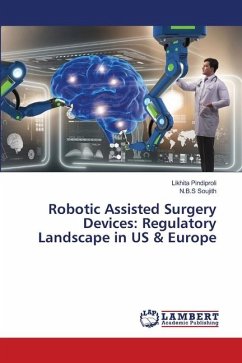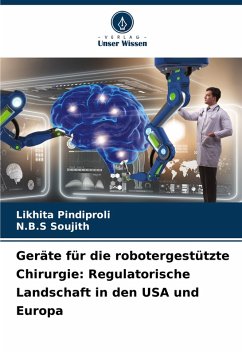
Robotic Assisted Surgery Devices: Regulatory Landscape in US & Europe
Versandkostenfrei!
Versandfertig in 6-10 Tagen
40,99 €
inkl. MwSt.

PAYBACK Punkte
20 °P sammeln!
Today, robots have become indispensable for performing highly specific, precise, and risky tasks in both industrial and research settings, tasks that were previously deemed impractical for human workers. The integration of robotics into the medical field has seen a significant surge. One notable development is robotic-assisted surgery, which has emerged as a recent option for conducting minimally invasive procedures. This innovation allows physicians to perform various types of surgeries by remotely controlling surgical instruments within a patient's body.In the United States, the regulatory o...
Today, robots have become indispensable for performing highly specific, precise, and risky tasks in both industrial and research settings, tasks that were previously deemed impractical for human workers. The integration of robotics into the medical field has seen a significant surge. One notable development is robotic-assisted surgery, which has emerged as a recent option for conducting minimally invasive procedures. This innovation allows physicians to perform various types of surgeries by remotely controlling surgical instruments within a patient's body.In the United States, the regulatory oversight of robotic surgery devices is managed by the FDA, following the guidelines outlined in the Code of Federal Regulations, Title 21. Meanwhile, in the European Union, the European Medical Agency (EMA) is responsible for authorizing these devices. This book delves into the regulatory landscape surrounding Robotic Assisted Surgery (RAS) devices in the US and EU, offering valuable insights through the examination of case studies.














